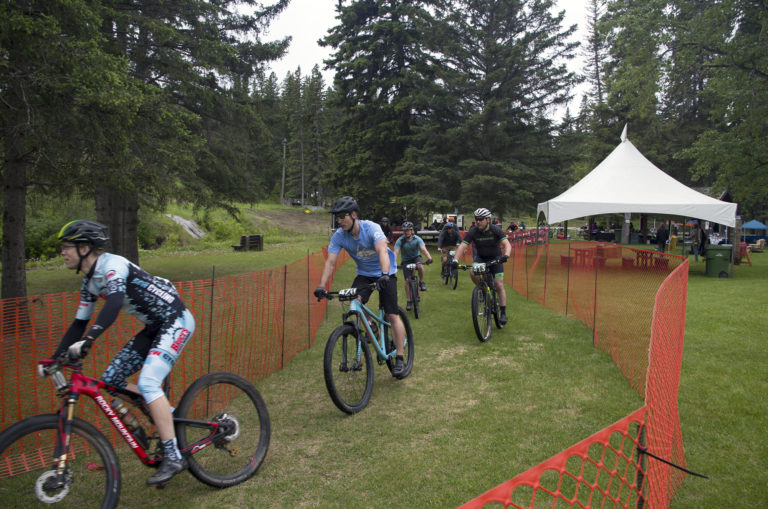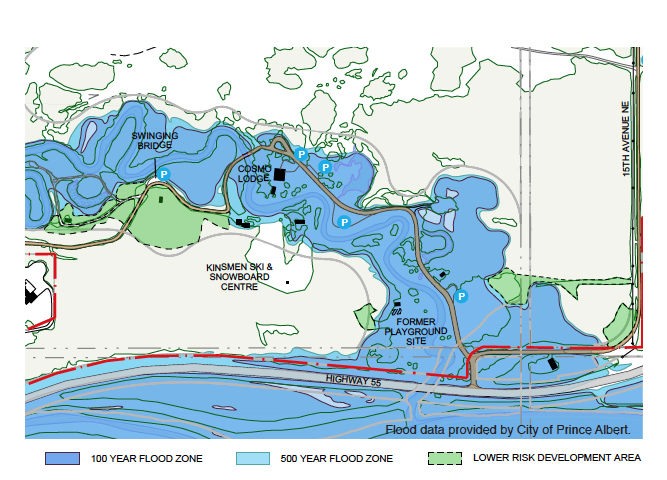
The City of Prince Albert parks manager will present a 10-year, $13.4-million plan to upgrade Little Red River Park at Monday’s executive committee meeting.
The new Little Red River Master Plan is the result of more than a year of consultations with sport and recreation organizations, education experts, environmental groups, Indigenous leaders and park users. It calls for upgrades, restorations and new construction projects in more than a dozen areas, including park accessibility, trail and hill maintenance, event planning, marketing and environmental sustainability.
“The directions laid out in this Master Plan aim to ensure that both preservation and progress are thoughtfully carried out,” reads the report. “Listening is a key tool to this process. All of the projects undertaken in this place must begin with listening, not just to the people, but the land, the water and the living components of this ecosystem.”
If accepted by council, city officials will implement the 10-year plan over five different phases. The first two are the most expensive, with administration estimating the cost at combined $7.7-million. That includes elders and knowledge keeper consultation fees, design and engineering fees, and a 25 per cent contingency.
The first phase would take place within two years of implementing the plan. It includes $790,000 in trail improvements, $528,000 in road repairs, $155,000 to upgrade the Kinsmen Ski and Snowboard Centre, and $120,000 to upgrade the Cosmo Lodge.
The plan also includes a pilot program for low-impact camping in the Upper Plains area of the park in phase one and Cosmo Place area in phase two (years three and four). That would allow for youth field trips, family group trips or land-based learning programs that use tents or yurts.
The report’s authors wrote that RVs would have a devastating effect on the natural environment. They do not recommend allowing them in the park.
Phase three (years five and six) includes options for extending transit services to Little Red River Park. Administrators say the new route could also provide service to Hazeldell and Nordale, as well as the Prince Albert Airport. The route would loop around to the main downtown transfer point at Central Avenue and 14th Street in downtown Prince Albert.
Phase three also includes plans to develop adventure or nature based recreation areas like a mountain bike jump track, a zip line, rope towers or climbing walls.
The plan includes two major cultural projects. The first is a $200,000 plan to redevelop the old Prince Albert Sanatorium Site into an Indigenous Ceremonial Grounds. The site already has water and sewer services, along with established road access from Sixth Avenue Northeast.
“There is a demand within the Indigenous community for space to conduct traditional activities such as powwows and sweat lodges…. The former Sanatorium site is ideal for this purpose,” the report reads. “This site was considered in the recent past for this use. With continued consultation with the City’s Traditional Knowledge Keepers Committee, this recommendation should be further explored.”
The second is a Historic Dakota Village project in the Upper Plain area. Elders from Wahpeton have identified cabins, roads and a hall once used by the local Dakota community. City administrators feel development of the area would be inappropriate, but believe it can be used to provide space for historical, educational or cultural gatherings.
“In the spirit of inclusivity and reconciliation, there is an opportunity to work with Wahpeton and other local First Nations and Métis communities to build a gathering space for cultural events that bring together youth and Elders from Indigenous and non-Indigenous communities,” the report reads.
Phase four includes only three projects, the biggest of which is a $540,000 plan to replace the swinging bridge that stands in place of the original one built in the 1920s. Administration say the structure and surrounding region are regarded as a hidden treasure, but say replacing it will be a costly endeavor that needs a separate feasibility study and public consultation process.
In phase five, administration would put out a call for proposals and designs to construct a new environmental education centre. The report’s authors envision something similar to the Brightwater Science, Environmental and Indigenous Learning Centre south of Saskatoon, and suggested programming partnerships with Saskatchewan Polytechinic, the University of Saskatchewan, and local school districts, as well as First Nations and Métis communities.
City administrators identified a number of challenges to improving Little Red, the biggest of which are environmental damage and public safety.

Floods in 2013, 2014 and 2016 caused extensive damage to the park, eroding riverbanks and causing significant plant loss. Floods also jammed the river with dead trees further upstream, reducing the chance for outdoor activities like kayaking.
City employees are also dealing with an infestation of dwarf mistletoe, a parasitic, small-flowered plant that cause damage to coniferous trees. Illegal activities like ATV use have also caused considerable damage.
The City began a major bank stabilization and reforestation project in 2019, and while the health of the area has improved, there are still problems with vegetation in the south end of the park. Bridge infrastructure damaged during those floods is still being repaired or replaced.
City officials say much of Little Red River Park lies within the one-in-100 year flood plain, so there are still chances that future projects may be affected.
While the parks remote location does attract visitors, it also causes problems for safety and security. The report’s authors wrote that deterring illegal activity has become nearly impossible, especially after park hours. Limited staff, low surveillance and a lack of dedicated patrol members assigned to the park have all contributed to the problem.
“More measures can be taken … to increase not only the visitors’ sense of safety, but actual safety and security,” the report reads. “Examples include lighting at the Park’s entrances and throughout Cosmopolitan Place, a foot or bike patrol through the Park during open hours, and an after-hours patrol.”
The report did not include a Crime Prevention Through Environmental Design (CPTED) assessment, but administration recommended council evaluate all future Little Red projects through those principles.
The Little Red River Park Master Plan is one of eight presentations on the agenda for Monday’s executive committee meeting. The meeting also includes an 11 item consent agenda.
Monday’s meeting begins at 2 p.m. inside City Hall.
